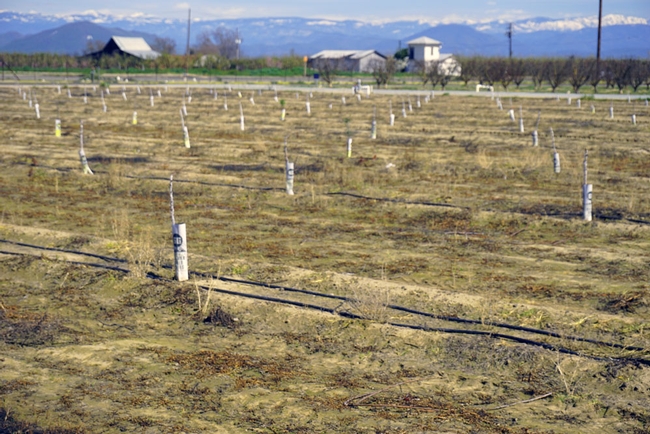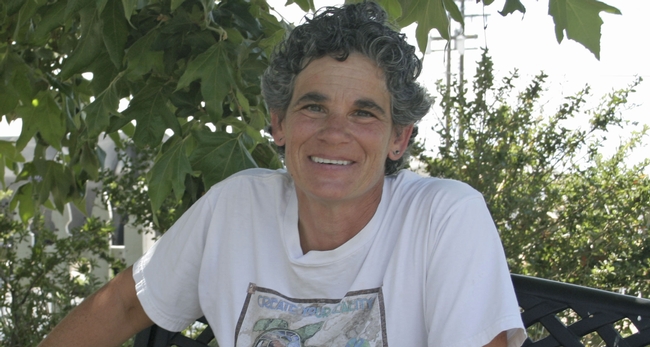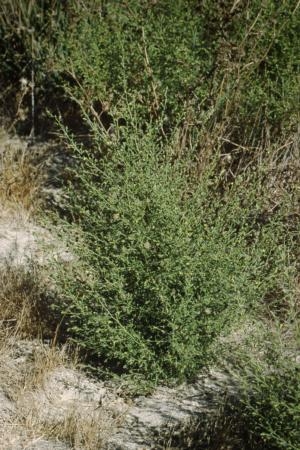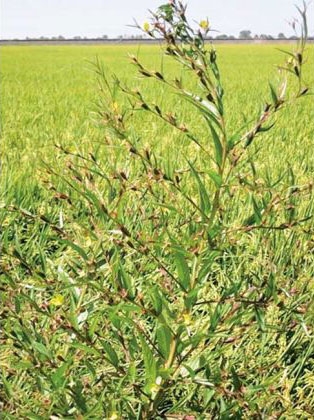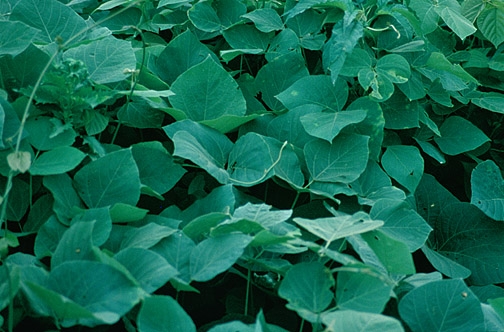Posts Tagged: weeds
Researchers raise concern over paraquat health risks
The popular herbicide paraquat works well and is inexpensive, but emerging research shows a correlation of paraquat exposure and Parkinson's disease, reported Kerry Klein on Valley Public Radio.
Klein met with UC Cooperative Extension weed advisor Kurt Hembree at an almond orchard near Selma that was clear of weeds. Growers kill weeds because weeds kill crops, Hembree said.
"Direct competition for water and nutrients. Whatever the tree likes, the weeds like," he said.
Hembree explained how the paraquat works.
"Paraquat's a contact-type herbicide," he said. "In other words, it's a material that, if you sprayed it on a plant, it'll disrupt the plant's cells. And basically in five or six days, whatever it touches, it spots up and it causes necrosis and death on the tissue."
Paraquat is toxic, so it requires careful handling to protect the safety of applicators.
“Something like paraquat, you're going to wear rubber boots, you're going to wear goggles while you're spraying,” Hembree said. “You don't want to get this stuff on your skin or on your mouth or anywhere.”
The KVPR story said paraquat is among the top 10 most common herbicides in California, and the San Joaquin Valley gets more than three-quarters of the state total. Caroline Tanner, a neurologist at UC San Francisco, was also interviewed for the story.
“People who mixed or applied this chemical had more than double the risk of developing Parkinson's disease compared to people really very similar as far as where they lived, even what they did for a living, age and gender,” she said.
However, people who were careful with personal protective equipment didn't have a greater risk of Parkinson's disease, Tanner said.
Control garden weeds in early spring
Wilen recommends home gardeners use a swivel (or hula) hoe to scrape the surface and decapitate weeds. “It's a bit of exercise,” she said, "but you can do it so quickly, it's not a problem.”
Another weed control strategy is a thick layer of mulch, with does double-duty by reducing water evaporation from the soil surface, thereby conserving water. Wilen suggests a three- to four-inch layer of mulch be spread in garden beds and landscape borders before the weed seeds have a chance to germinate. Mulch blocks the sunlight weeds need to push through the ground.
Fabric weed barriers are useful for controlling particularly challenging weeds, like nutsedge. Wilen suggests covering the fabric with mulch for an esthetically pleasing weed-free garden.
Though the common herbicide glyphosate (such as Roundup) kills weeds and is safe if used correctly, Wilen prefers using the swivel hoe. "It's just quicker and easier than pulling out the spray equipment," she said.
Unwelcome weed 'stinkwort' spreading quickly in California
Stinkwort made its first California appearance in 1994, but remained quite rare until the mid-2000s, when it began spreading rapidly. Stinkwort is now found in 36 of the state's 58 counties, particularly along roadsides.
"If it gets a major foothold and produces millions and millions of seeds, then the seedlings will grow and they can form a carpet," DiTomaso said. "Then it would block light and prevent the growth of more desirable species – like native plants. It will out-compete them, and that is a concern."
Another troubling aspect is that the weed has been seen in vineyards, said John Roncoroni, UCCE advisor in Napa County, a weed science expert.
"I've seen it on the roadsides in Napa, and it's just encroaching into the vineyards at Napa Valley College," he said.
Invasive weed threatens California rice
The weed is highly invasive, produces vast quantities of seeds and survives under a wide range of hydrological and climatic conditions.
"Farmers have to keep an eye out for this weed, and let us know if they think they have it," said Luis Espino, UC Cooperative Extension advisor in Colusa, Glenn and Yolo counties, a rice production expert.
Unlike other waterprimroses, the winged primrose willow can grow within flooded rice fields, which makes it even more problematic for local farmers if it should get established in this area, Espino said.
UC farm advisor outlines problems posed by invasive species
Faber said invasive species are being introduced at a rapid rate around the world, and are primarily spread by humans.
He differentiated between non-native plants that are beneficial, such as avocados and citrus, and invasive plants that have been accidentally introduced into an ecosystem where they run rampant.
"An invasive species is something out of place and out of control," he said.
Fresno State report confirms state’s farmers apply water efficiently
Fresno State press release
Claims that California farmers are wasteful and inefficient in managing their water supplies are inaccurate, according to a new report released by Fresno State's Center for Irrigation Technology.
The study is the culmination of a yearlong effort by irrigation experts to update the 1982 University of California Cooperative Extension report “Agricultural Water Conservation in California with Emphasis on the San Joaquin Valley” by David C. Davenport and Robert M. Hagan.
The new study concludes that the 1982 report correctly framed the potential for agricultural water-use efficiency, and many of its findings are still relevant 30 years later.

